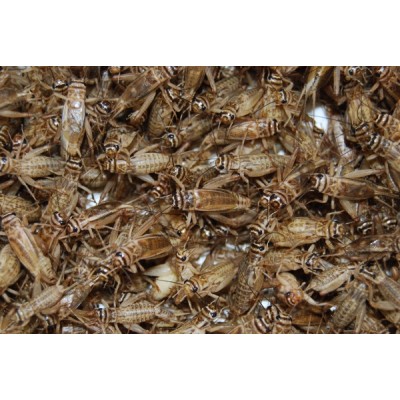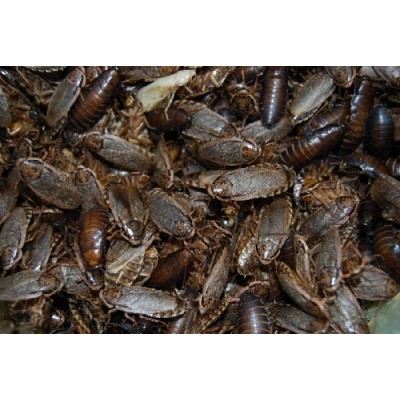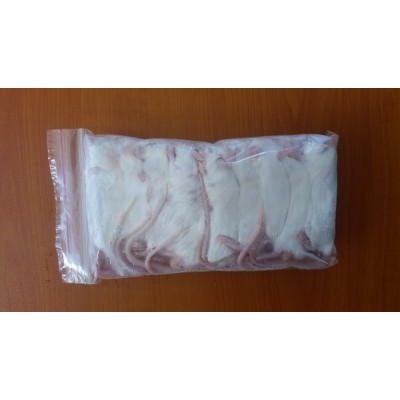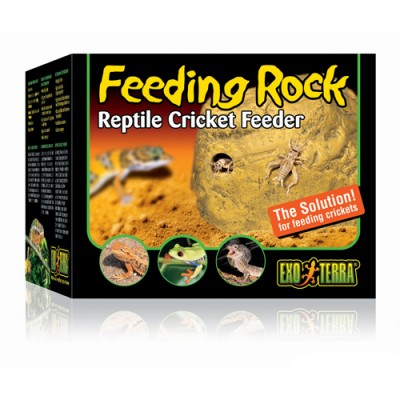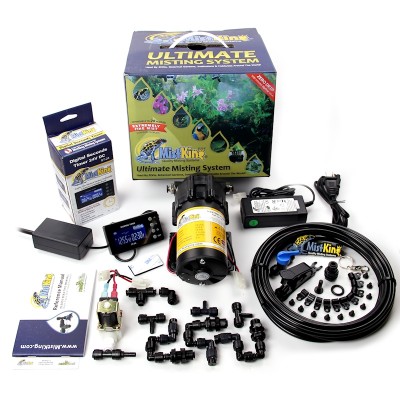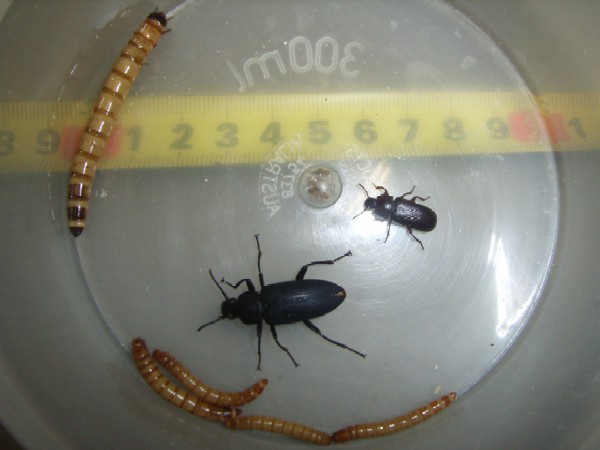Giant Mealworms (Caresheet)
MAINTAINING GIANT MEALWORMS
Care of giant mealworms is very simple. They can be maintained in a plastic tray or container with 2-3cm of unprocessed bran and maintained at room temperature (20-25°C). They will tolerate higher and lower temperatures than this but should NEVER be kept in the fridge, which is a common practice with common mealworms. The giants are a tropical species and any extended periods of less than 12°C will be fatal. They should be supplied with a piece of fresh carrot, apple, orange, pumpkin, etc. every day or so as a water source, though not too big otherwise it will promote mould growth on the bran. If your worms are kept together as a group in one container they will not pupate and turn into beetles like the common mealworms do so they have an excellent shelf life of between 2-10 weeks depending on conditions.
Due to the size of the mature giant mealworms they can be a little on the large size for some smaller lizards, frogs, fish and birds. Adult bearded dragons, forest dragons, monitors, blue-tongue lizards, green tree frogs, etc. are all quite capable of consuming fully grown worms. We have now established techniques for harvesting giant mealworms at smaller sizes s well as the normal large size mealworm at about 1gm in weight and 40-50mm in length, we now also offer medium sized giant mealworms, which are about the same size as a common mealworm at about a quarter of a gram and 25-30mm in length and a small size which way around 0.1gm and measure 15-20mm in length.
There are several myths about mealworms as food items and one of the commonest is that they can eat their way out of the stomach unless the heads are removed before feeding. This is absolutely untrue and provided the correct sized mealworms are offered they make a good nutrtious food item. However, the overall key to feeding mealworms is moderation. Ideally, only 2-3 appropriately-sized mealworms should be offered at each feeding session, they can be given regularly but only in these small quantities. The problem is the outer skeleton of the mealworm contains a product called chiton which is indigestable. In small quantities this is passed through the gut and expelled in the droppings but if large quantities are given it can form a ball of indigestable matter in the stomach and this may lead to regurgitation. In excess it is possible that a big ball of chitin can cause an impaction of blockage in the digestive tract, which can be very serious a potentially fatal if left untreated. Personally, I have been feeding giant mealworms to my reptiles on a regular basis for many years and never had a problem but just remember to feed the regularly but in small quantities.
COMPARISON BETWEEN GIANT MEALWORM (ZOPHOBAS MORIO) AND COMMON MEALWORM (TENEBRIO MOLITOR) BEETLES AND LARVAE.
- All images property of Gunther Schmida & Rob Porter
OpenCart Maintenance
© Copyright 2001-2025 Livefoods Unlimited - All Rights Reserved
Tel: 0400464505 - livefoods@outlook.com - A.B.N 37 960 709 736

